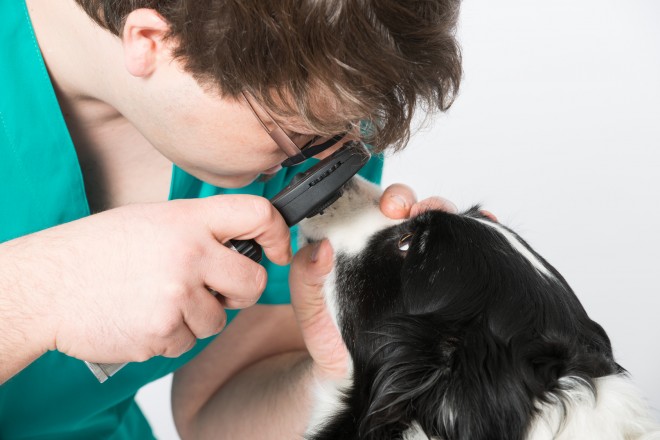

The way that the eyes of the dog works and how they perceive the world through vision is markedly different from how people see, which we’ve covered before in this article. However, just like people, dogs can be plagued by a variety of eye problems and conditions that can affect their vision, in some cases being born with restricted vision or partial or full blindness, but in other cases, due to something that happens during their life or because of a progressive condition.
Losing the acuity of the eyesight is a common effect of old age in the dog, as the body naturally begins the slow and progressive shutdown towards the final years of their life. In some dogs, you will be able to spot subtle changes and developments with the eyes themselves that can tell you that something is amiss, but in other cases, the eyes themselves might not give you any clues. Blindness or partial blindness in the dog can either be slow in onset or relatively acute, and while some types of loss of vision are irreversible, some can be treated to return sight to your dog.
But how would you know if your dog was losing their eyesight in the first place, in order to take action? In this article, we will cover some of the signs to look out for, so that you can get your dog the help that they need if their eyesight begins to fail them. Read on to learn more.
Keep an eye out for subtle changes in your dog’s normal behaviour patterns. Loss of vision is often progressive, and as your dog’s eyesight begins to fail, they may need to use landmarks to orient themselves with. If your dog who previously roamed the whole garden tends to stick close to the fence when they go out, they may be using the fence to orient themselves, if their vision loss makes the rest of the garden appear less clear.
If your dog has always been happy to do their own thing but now seems to be much more clingy than normal, this too can be a sign of impending blindness. If your dog is not confident in navigating the world any more, they are apt to stick close to security, such as you, to guide them around.
When your dog has his meals, does he suddenly seem to be very defensive about them, sometimes barking or snarling as if to see off another dog that may not even be there? If your dog cannot see who or what is around them, this can manifest as aggression in the form of resource guarding.
If your dog has previously been very outgoing and friendly with both other dogs and people, a sudden shyness or reluctance to socialise might be a manifestation of your dog’s uncertainty about what is going on, due to failing eyesight.
If your dog begins to bump into things, this is one of the most common indications that their eyesight is failing. If your dog cannot see the things around them, or their field of vision is narrowing and making it hard for them to judge distances, they may seem to be more clumsy than normal, particularly if you move furniture around or place something in a usually clear path.
A great many breeds of dog, and by association, mixed breed dogs with varied heritage, have a hereditary predisposition to certain eye conditions. Finding out if the breed or combination of breeds that your own dog is has any specific predispositions can help you to learn about the symptoms and know what to look out for in the future.
If your dog is losing their vision gradually, they are likely to be able to see the best in bright lights. If your dog appears to be fine during the day but manifests some of the above behaviours at night or in dim light, this can be another sign of a problem developing.
Not every canine eye condition can be seen with the naked eye, but a reasonable amount of conditions will cause subtle changes in the appearance of the eyes themselves, such as the signature milky-looking appearance that accompanies cataracts. If you notice any changes in the eyes of your dog, get them checked out by the vet for an early diagnosis.
One way that you can pro-actively take a closer look at your dog’s eyes is by using flash photography. This can often reveal problems that might not be apparent to the naked eye. Usually, if you photograph a dog front on with the flash on, the eyes will appear red from the camera flash. But if in pictures your dog’s eyes appear to be reflecting green, this can be indicative of an eye problem in development.
Copyright © 2005-2016 Pet Information All Rights Reserved
Contact us: www162date@outlook.com